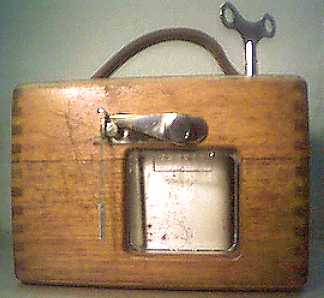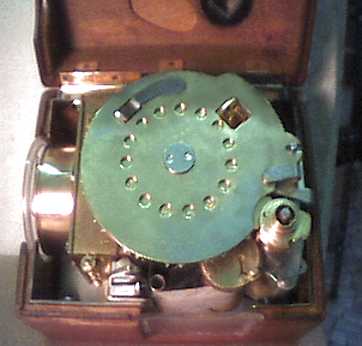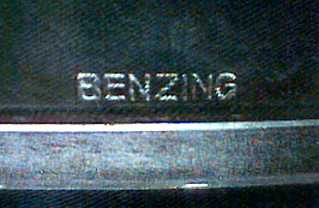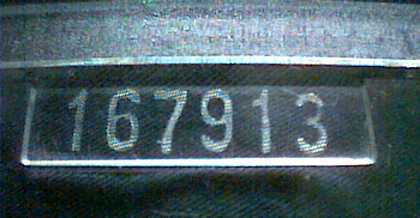A racing pigeon clock: it was used to print on a paper strip the arrival time of pigeons during races. Today there are still many people enjoying this hobby. You can learn much more visiting this site:: International Federation of American Homing Pigeon Fanciers)
The printing mechanism hits with violence the movement, which is exceptionally robust. An example for most technically involved people: the banking pins are mounted on springy supports.
The maker is the German firm Benzing, still in business and very well known by pigeon breeders. Today's clocks are made using quartz movements and electrical printers. In this one indeed everything is strictly mechanical. Even the wooden case is very robust: joints are not glued as you can see in the picture below.

A side view of the case: the surface still retains the original wax finish. It has not been removed nor the case has been smoothed off. From the side glass data can be easily read. A small padlock can be applied to the closing clip against any tampering.

The printing mechanism with and without the container for the small witnesses brought by the pigeons. The construction is ingenious and very robust. A particular device pierces the paper tape every time the case is opened, to avoid alterations of the clock.
 --
-- 
The dial retains intact its silvered finish. The paper tape is original, with the stamp of the Dutch mail and the fabrication date repeated approximately every 4 inches
 --
--
Glasses are made of thick plastic and clock's serial number is engraved on them.
 --
--